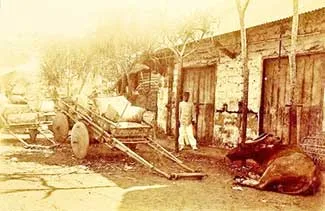Know the Population of 22 Batangas Towns in 1877
An 1895 book entitled “Batangas y su Provincia1” (Batangas and its Province) paints a compelling picture of the province far from the congested place modernity has turned it into in the present day. Written by the Spanish historian Manuel Sastron, the books gives contemporary readers a vivid glimpse of an era when Batangas was lush with forests and vegetation and towns and villages were not just sparsely populated but also relatively isolated from each other.
At the time of the book’s publication, Batangas had 22 “pueblos” or towns: Balayang, Batangas, Bauang, Calaca, Calatagan, Cuenca, Ibaan, Lemery, Lian, Lobo, Nasugbu, Rosario, San Jose, San Juan de Bocboc, San Luis, Santo Tomas, Taal, Talisay, Tanauan, Taysan, Tuy and Villa de Lipa.
In the present day, the province has three cities (Batangas, Lipa and Tanauan) and thirty-one municipalities. Agoncillo separated from Lemery in 1949; Alitagtag from Bauan in 1909; Balete from Lipa in 1969; Laurel from Talisay also in 1969; Mabini from Bauan in 1918; Malvar from Lipa in 1918; Mataasnakahoy also from Lipa in 1932; Padre Garcia from Rosario in 1949; San Nicolas from Taal in 1955; San Pascual from Bauan in 1969; Santa Teresita from Taal, San Luis and San Nicolas in 1961; and Tingloy from Bauan in 19552.
In his book, Sastron wrote, “Se cornpone la provincia de veintidos pueblos, y el nurnero de sus habitantes segun el ultimo padron general, es el de 314,600.” (Roughly, the province has 22 towns, and the number of inhabitants according to the last general census is 314,600.)
From the records of the National Statistical Coordinating Board, now the Philippine Statistics Authority, the census that Sastron referred to was likely the one undertaken by the Spanish colonial government in 18873. The numbers provided by Sastron were probably to be taken with a grain of salt. Conducting censuses in the nineteenth century would not have been as thorough and efficient as they are done in the present day.
He also provided population counts for each of the 22 pueblos, which when aggregated is 5,234 more than the province’s total population that he himself provided. On the other hand, Sastron and those who undertook the census did not have the luxury of MS Excel tables and formulae.
Nonetheless, the numbers still make for fascinating reading, especially in comparison to present day figures. For instance, the total provincial
Here are the 1887 population figures for the 22 pueblos of Batangas:
| Census | 1887 | 2015 | ||
| Villa de Lipa (included Malvar & Mataasnakahoy in 1887) | 40,000 | 332,386 | ||
| Bauan (included Alitagtag, Mabini & San Pascual in 1887) | 36,727 | 91,297 | ||
| Batangas City | 32,101 | 329,874 | ||
| Taal (included San Nicolas in 1887) | 26,700 | 56,327 | ||
| Tanauan | 22,000 | 173,366 | ||
| Balayan | 19,000 | 90,699 | ||
| Lemery (included Agoncillo in 1887) | 17,867 | 93,157 | ||
| Rosario (included Padre Garcia in 1887) | 13,500 | 116,764 | ||
| Calaca | 12,207 | 81,859 | ||
| Santo Tomas | 11,329 | 179,844 | ||
| San Juan de Bocboc | 10,549 | 108,585 | ||
| Tuy | 10,450 | 43,743 | ||
| San Jose | 10,000 | 76,971 | ||
| Ibaan | 8,712 | 52,970 | ||
| Nasugbu | 7,893 | 134,113 | ||
| Talisay (included Laurel in 1887) | 7,596 | 45,301 | ||
| Taysan | 7,074 | 38,007 | ||
| Lobo | 6,700 | 41,504 | ||
| Cuenca | 6,624 | 32,783 | ||
| San Luis (included parts of Sta. Teresita in 1887) | 6,543 | 33,149 | ||
| Lian | 4,023 | 52,660 | ||
| Calatagan | 2,239 | 56,449 |
2 The sources are compiled in the article “Know the Towns of Batangas that used to be Part of other Towns in the Province,” publish April 2017 in this same web site.
3 “Population of the Philippines Census Years 1799 to 2010,” online at the National Statistical Coordinating Board.

